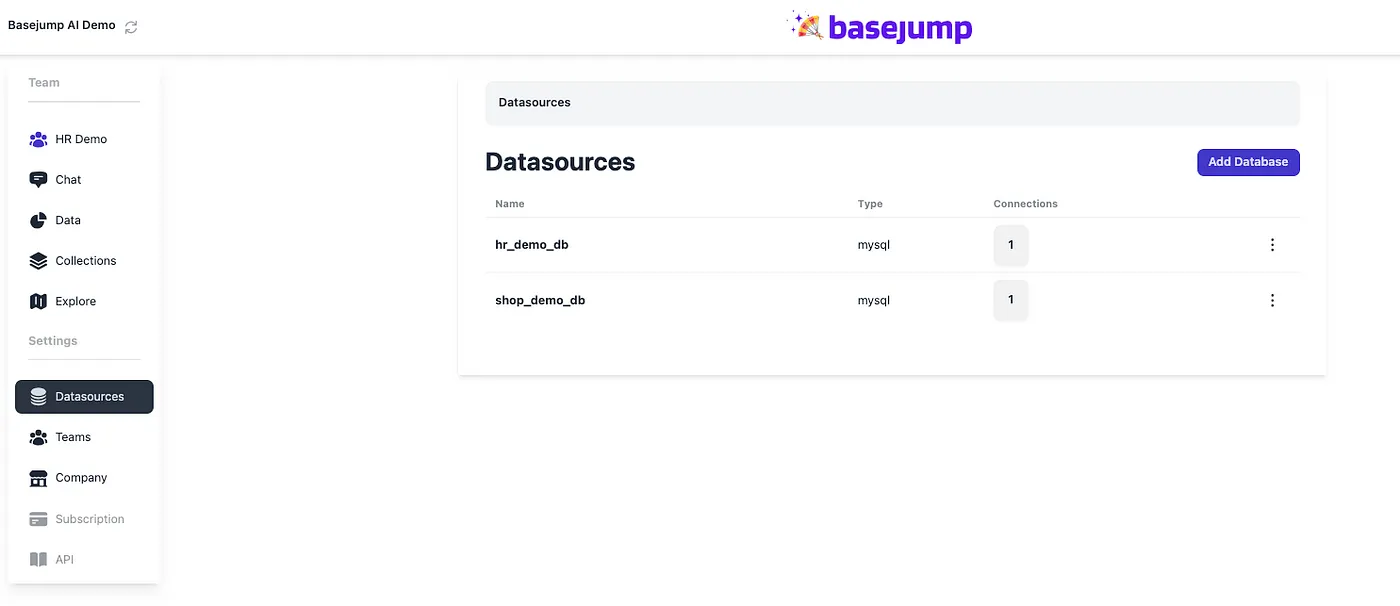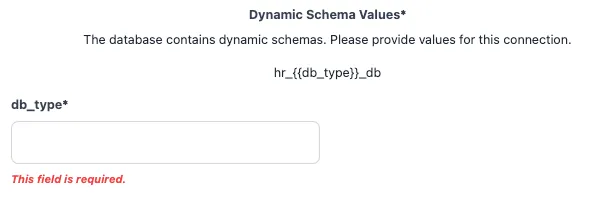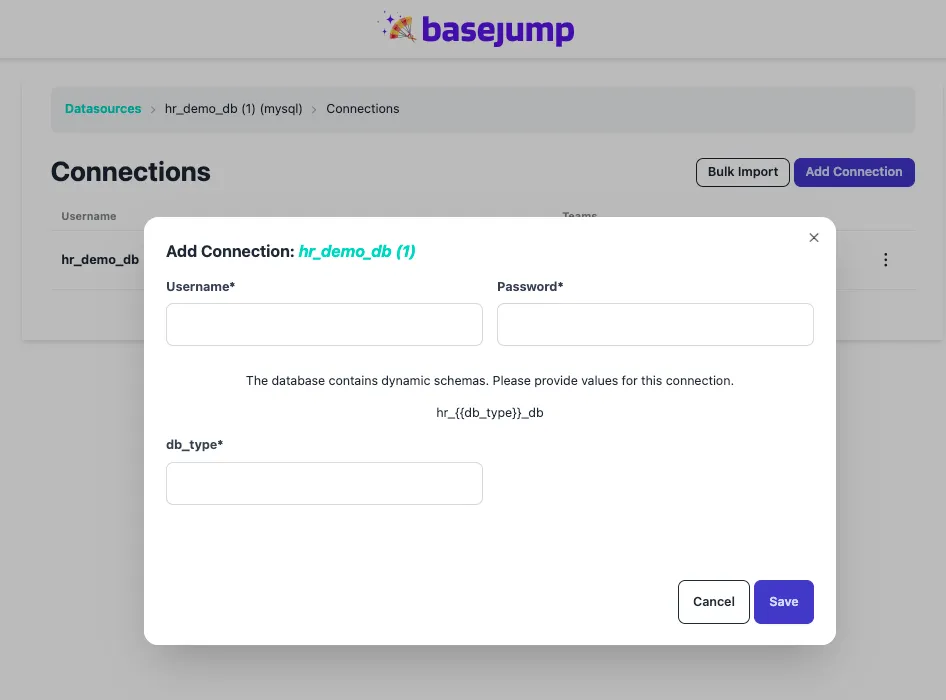
Screenshot of the datasources page
We just created a new datasources page! It was included in the ‘Company’ page before, but it now has its own page to support the increased number of options.
TLdr
Here is the video for those of you who want to watch our release update.
Release Feature Overview
In the prior release, we added database metadata editing, which was really important to give the AI the appropriate context. With this release, we improved database management. We added some really important new features that increases the usability of the product:
- Support templated schemas that may be created using Jinja workflows (think dbt)
- Added options to bulk add connections (each connection is a database user role with its own permissions and login credentials)
- Added the ability to bulk edit permissions for teams and how many teams have access to a given connection
Templated Schemas (aka ‘Jinjafied’ Schemas)
We call each user role that is created for a database ‘connections’. One of the important considerations is that connections can have access to different schemas, but these different schemas are based on the exact same database tables. This is more common with SQL workflows powered by dbt or using some variant where Jinja and SQL are combined.
We’re proud that we have the option to support schemas that have this setup. In order to set up templated schemas, add a database on the database page.

Initial connection details
You can see here, that I added a templated schema, with the key for the templated schema listed as ‘db_type’. This creates an input box down below to fill in the value for that particular connection.

Bottom of the modal from the prior screenshot
For this one we will put, ‘demo’. So the full schema name will resolve to ‘hr_demo_db’.
Then whenever a new connection is added, it will also prompt you for the jinjafied schema. Adding a new connection now looks like this:

What adding a new connection would look like
Bulk Add Connections
You will see a tally by the database name with the connection count.
Screenshot showing button to manage connections
Once this is clicked you can bulk import connections.
Screenshot of bulk importing connections
This is really important for those who may have many different user roles all with different schemas. Instead of inputting them manually, you can upload the connections using a CSV.
Bulk Manage Team Access
We also made it easier to change which teams have access to which connection.
Screenshot showing how to manage team access to a connection
Using the checkboxes, you can easily provision or de-provision access to database connections.
Screenshot showing managing team connections
Conclusion
We’re really happy with this release and wanted to share our progress. Our product is still in beta, but we’re making large strides to improving usability and accuracy for building our AI data agent.
If you and someone you know is interested in trying out AI for data analytics, book a demo here: https://basejump.ai/demo
We would love to show you how our product can help your data team and business users. Also follow us on our social platforms as well to stay updated:
- LinkedIn: https://www.linkedin.com/company/basejumpai/
- Bluesky: https://bsky.app/profile/basejumpai.bsky.social
- X: https://x.com/basejumpai
Thanks!
-Basejump AI Team